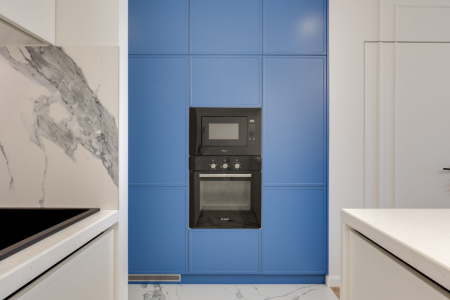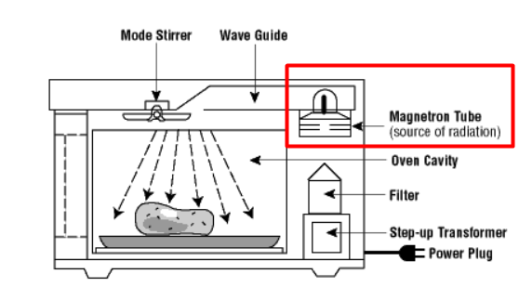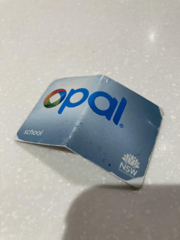Are you guilty of these six microwave cleaning mistakes? Pros reveal their secrets!
We know how important it is to keep our kitchens sparkling clean and our appliances functioning efficiently. Our trusty microwaves are an absolute lifesaver—especially when it comes to whipping up a hot meal in a jiffy, defrosting dinner, or even making a quick mug cake on a chilly day.
However, despite our best intentions, many of us may be unknowingly making common cleaning mistakes that not only jeopardise the longevity of our microwaves but also affect their performance and hygiene. Well, have no fear, dear readers, because we've gathered expert advice to help you avoid these pitfalls and keep your microwaves in tip-top shape!

According to Kevin Geick, manager at biohazard cleaning company BioRecovery, ‘These substances can release toxic fumes when heated and leave behind residue that can contaminate your food. Stick to milder, microwave-safe cleaners or natural alternatives.
Fortunately, environmentally conscious consumers have a range of natural, effective alternatives to choose from, including white vinegar, which can dissolve mineral deposits; Bicarb soda, perfect for removing grease and grime; and lemon juice, excellent for cutting through dirt and powerful odours.
If you don’t have the time or energy to DIY your cleaning solution, there are a wide variety of ready-made cleaners available in Woolworths and Coles.

How do you plan to apply this newfound knowledge to effectively clean and maintain your microwave, guaranteeing its longevity and optimal performance? Share your strategies for keeping your microwave pristine and efficient, as a clean and well-functioning appliance is vital in our daily lives.
Happy cleaning, members!
However, despite our best intentions, many of us may be unknowingly making common cleaning mistakes that not only jeopardise the longevity of our microwaves but also affect their performance and hygiene. Well, have no fear, dear readers, because we've gathered expert advice to help you avoid these pitfalls and keep your microwaves in tip-top shape!

It is possible that many of us are unintentionally making common cleaning errors that can compromise the durability, performance, and hygiene of microwaves. Photo by Max Rahubovskiy
Cleaning With Harsh Chemicals
Though you might be tempted to give the microwave a thorough cleaning with chemicals like bleach, ammonia, or oven cleaner, resist the temptation.According to Kevin Geick, manager at biohazard cleaning company BioRecovery, ‘These substances can release toxic fumes when heated and leave behind residue that can contaminate your food. Stick to milder, microwave-safe cleaners or natural alternatives.
Neglecting The Vent
Most microwaves come equipped with vents on their sides or back, which release hot air. Geick warns that 'these vents can become clogged with grease, dust, and debris, affecting the microwave's efficiency.' Ensure your appliance remains in good working order by regularly cleaning these vents with a fluffy brush or soft vacuum cleaner attachment.Getting The Control Panel Too Wet
Fingerprints and food splatters accumulate easily on the microwave's exterior control panel, but using excessive water or spraying it directly with a cleaning solution could damage the delicate electronic components. Karina Toner, operations manager of Spekless Cleaning, advises using a damp cloth or sponge to gently clean the buttons and panel.Using Abrasive Tools Inside The Microwave
While steel wool or abrasive scrubbers might seem like the right choice for tackling stubborn interior stains, they can actually cause more harm than good by scratching the microwave's interior and creating breeding grounds for bacteria. Toner recommends using softer cleaning tools like sponges or microfibre cloths to effectively and safely remove stains.Forgetting About Seals And Hinges
Focusing solely on the microwave's turntable, walls, and ceiling isn't enough. Don't overlook the door seals and hinges, where pesky food particles can get lodged and create unpleasant odours. Justin Carpenter, the owner of Modern Maids in Houston, encourages cleaning these often-overlooked areas.Touching The Magnetron
Deep cleaning your microwave may find you face to face with the magnetron, the component which generates waves, creating heat. Rocky Vuong, founder of Calibre Cleaning in Australia, warns that the magnetron 'can retain a lethal electrical charge even when unplugged’. Leave any magnetron-related maintenance to professional technicians to avoid dangerous mishaps.Natural Cleaning Solutions for Household Appliances
When it comes to keeping our appliances clean, we should think twice before using harsh cleaning products. Not only can they release toxic fumes, leaving behind residue that can contaminate our food, but they can also corrode delicate electronic components or cause other unintentional damage.Fortunately, environmentally conscious consumers have a range of natural, effective alternatives to choose from, including white vinegar, which can dissolve mineral deposits; Bicarb soda, perfect for removing grease and grime; and lemon juice, excellent for cutting through dirt and powerful odours.
If you don’t have the time or energy to DIY your cleaning solution, there are a wide variety of ready-made cleaners available in Woolworths and Coles.
Key Takeaways
- Many common mistakes can be made when cleaning a microwave, such as using harsh chemicals, neglecting the vent, and using abrasive tools.
- It is important to avoid these mistakes and use gentle cleaning techniques to maintain the microwave's efficiency and safety.
- Paying attention to smaller details, like cleaning the seals and hinges, can prevent unpleasant odours and potential issues down the line.
- The magnetron in the microwave should not be touched, as it can retain a lethal electrical charge even when unplugged, and any related issues should be addressed by a professional technician.
How do you plan to apply this newfound knowledge to effectively clean and maintain your microwave, guaranteeing its longevity and optimal performance? Share your strategies for keeping your microwave pristine and efficient, as a clean and well-functioning appliance is vital in our daily lives.
Happy cleaning, members!








